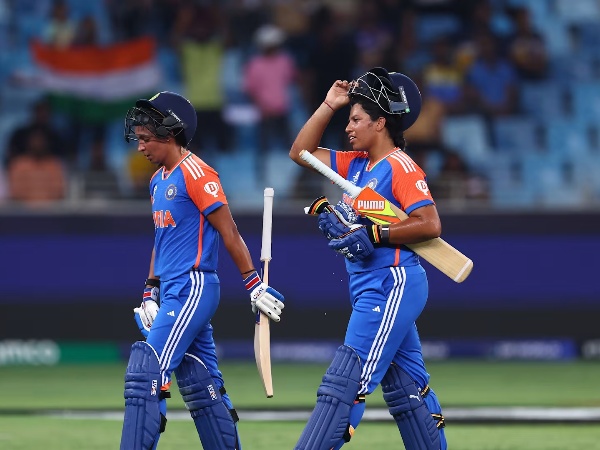views : 798
4 Min Read
ICC Women's T20 World Cup 2024: What went wrong for the Indian Women?
Recurring mistakes and cycles of heartbreak plagued Indian women’s cricket once again, as Harmanpreet Kaur and her team faced an early exit from the ICC Women’s T20 World Cup 2024, falling short in the group stages. Prior to the tournament, skipper Harmanpreet confidently asserted that this was the "strongest Indian side" ever assembled for a World Cup, a statement that now feels hollow. Head coach Amul Muzumdar, who took charge at the end of the previous year, echoed this sentiment, promising fans that the team had finally settled on a number three batter—a critical decision that now looms large in light of their dismal performance.
The ambitious plans for the number three slot ultimately proved ineffective, revealing a stark contrast between the team’s theoretical strength and their on-field execution. While the squad boasted impressive credentials on paper, the reality was a series of missteps that undermined their potential. The inability to capitalize on key moments, combined with inconsistent performances, painted a troubling picture for the future of Indian women’s cricket. The tournament’s outcome has raised urgent questions about strategy, player roles, and the overall approach to international competition. As the team reflects on this disappointment, it becomes clear that significant changes may be necessary to rebuild and restore faith among fans and supporters in the years ahead.
How India Women campaign crashed at the ICC Women's T20 World Cup 2024?
Unfortunately for Harmanpreet Kaur and head coach Amul Muzumdar, a critical flaw in their plans was the lack of international games between July 28, when the Asia Cup concluded, and October 3, just before the World Cup began. This significant gap in competitive play had dire consequences for the team’s performance. In contrast, New Zealand entered the tournament with a recent three-game T20I series in Australia, which prepared them well. Although they faced a heavy defeat at the hands of Alyssa Healy's team, they had the rhythm and experience necessary for success. When they faced India on October 4, it was evident that they were more in sync and better prepared, resulting in a 58-run victory over India.
The Indian Women's team struggled in various aspects of the game: their bowling allowed New Zealand to score 160 runs, while their batting faltered, collapsing to just 102 runs. Fielding errors compounded the issues, with four crucial chances going begging. The two-month gap meant batters like Smriti Mandhana and Richa Ghosh, who had performed well in the Asia Cup, arrived in Dubai lacking form. Additionally, with Harmanpreet now batting at number three, her slow starts became a liability that the opposition exploited effectively.
After initially placing Harmanpreet Kaur at number three in the first game, India reverted to Jemimah Rodrigues in her usual spot. However, this adjustment didn’t pay off in the must-win clash against Australia, where the pressure fell back on Harmanpreet to lead the chase. Unfortunately, she fell short once again, adding to the team’s heartbreak. Additionally, India missed an opportunity to utilize Yastika Bhatia, a capable batter who could have stepped in for leg-spinner Asha Sobhana, who was injured. Yastika’s experience, especially from the Women’s Premier League, could have bolstered the inexperienced lower order. Instead, India lost the match by just nine runs.
The lower-order trio of Pooja Vastrakar, Deepti Sharma, and Shreyanka Patil were expected to finish games but had limited opportunities to prove themselves in crucial situations. When it came time to perform under pressure against a strong team like Australia, they struggled with both power and execution. Ironically, while Indian batters excelled against spin—averaging 33.5 and striking at 116.7—they floundered against pace, averaging a mere 11.8 and losing 16 wickets. No other team faced such difficulties against pacers, highlighting a persistent issue in their game strategy. Each attempt to address weaknesses seemed to reveal new gaps, leaving the team in a frustrating cycle.
Muzumdar's tenure as head coach centered around enhancing fielding and fitness within the Indian team. Despite holding multiple training camps, issues persisted, highlighted by India dropping nine catches in four matches and achieving a catching efficiency of just 69%. While India's catching percentage remains the second best after New Zealand, it was the running between the wickets that significantly impacted their performance. The glaring run-outs in the game against Australia illustrated this issue, but what stood out more was how effortlessly Australian batters converted singles into doubles compared to their Indian counterparts. On a pitch where scoring boundaries was challenging, the ability to run doubles became crucial, and the Indian women seemed unable to match the Australians' fitness levels.
Additionally, Richa Ghosh's wicketkeeping was subpar throughout the tournament, as she conceded numerous byes and failed to make clean catches, particularly against New Zealand. This lack of precision contributed to India's struggles, as evidenced by the 14 extras they gave away against Australia, compared to just eight from their opponents. Collectively, these factors exposed critical weaknesses that hindered India's chances in the tournament.
